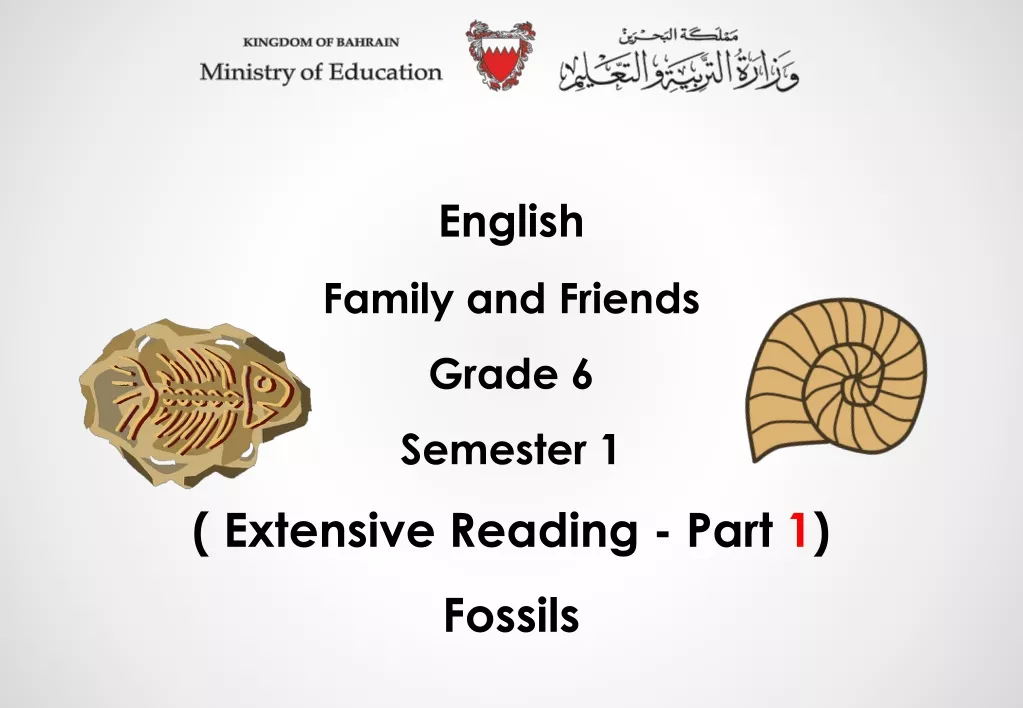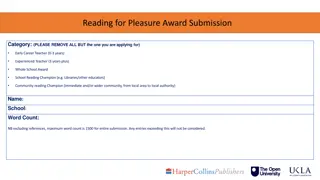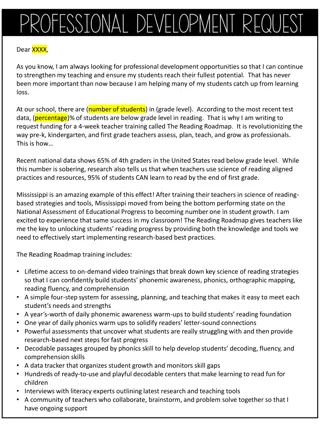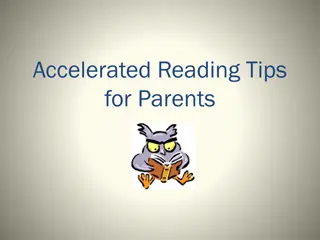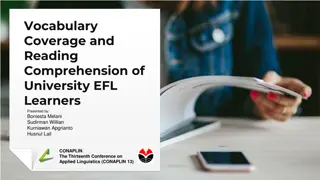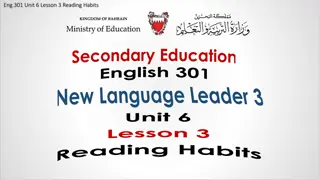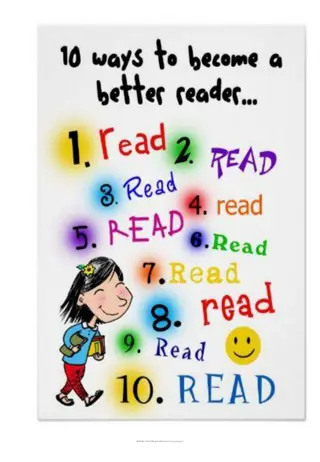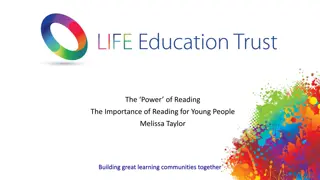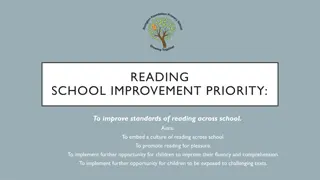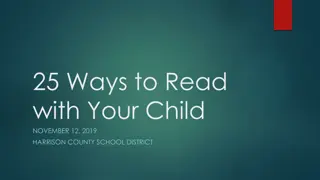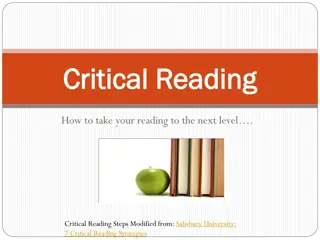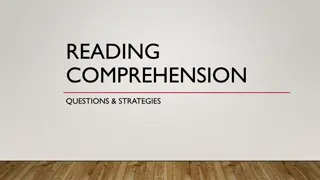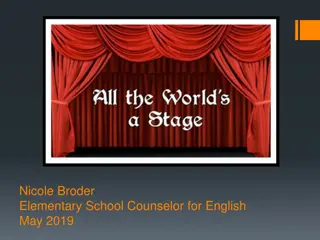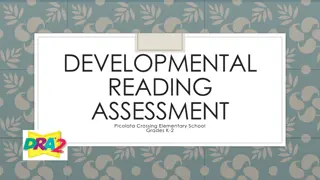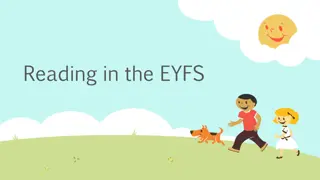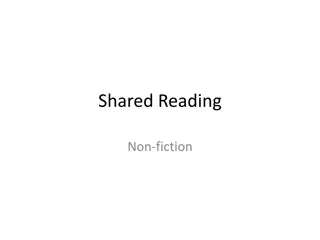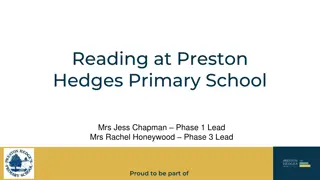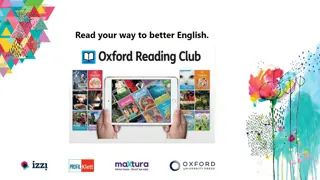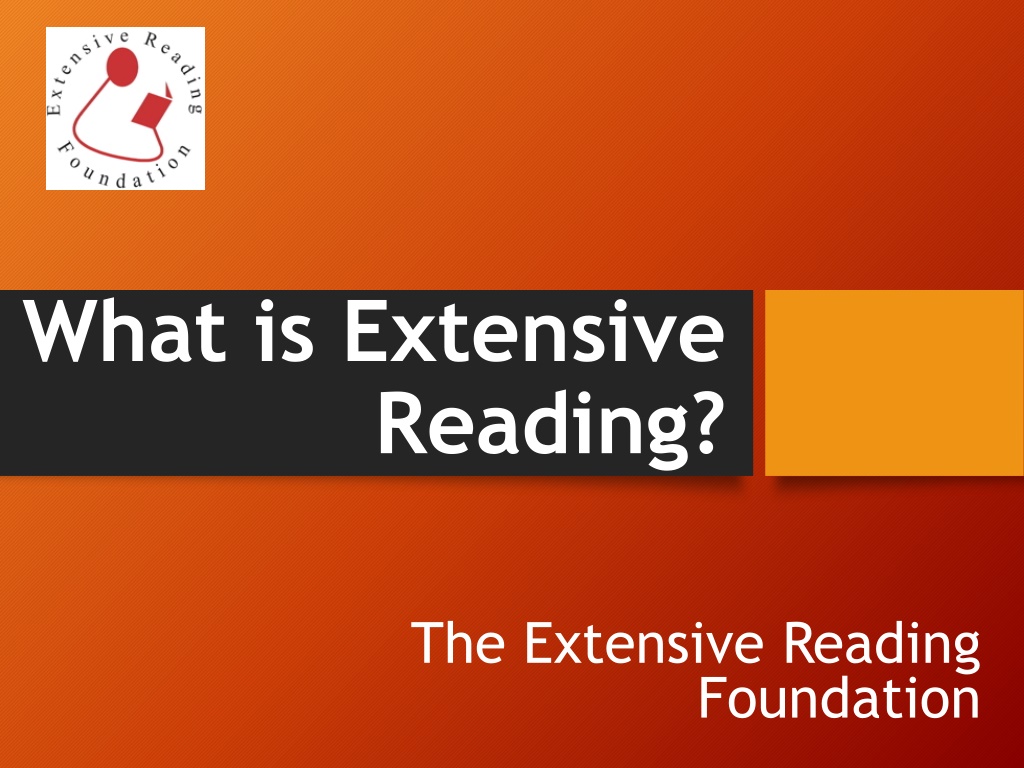
Understanding Extensive Reading in Language Learning
Discover the principles of Extensive Reading (ER) in language learning through a series of quiz questions covering topics like how much to read, what materials to use, who chooses the materials, text difficulty, reading speed, teacher's role, and reading locations.
Download Presentation

Please find below an Image/Link to download the presentation.
The content on the website is provided AS IS for your information and personal use only. It may not be sold, licensed, or shared on other websites without obtaining consent from the author. If you encounter any issues during the download, it is possible that the publisher has removed the file from their server.
You are allowed to download the files provided on this website for personal or commercial use, subject to the condition that they are used lawfully. All files are the property of their respective owners.
The content on the website is provided AS IS for your information and personal use only. It may not be sold, licensed, or shared on other websites without obtaining consent from the author.
E N D
Presentation Transcript
What is Extensive Reading? The Extensive Reading Foundation
A quiz on ER . . . Each slide will ask you a basic question about Extensive Reading. Look at the answer choices. Decide on one or more. Ready?
How much should students read? Just what the teacher tells them to read. As much as they can read carefully. As much as possible, even if they don t understand it all
What reading material should they use? Their textbooks English novels Newspapers in English Graded Readers Materials in Easy English Online material Online material Their textbooks English novels Newspapers in English Graded Readers Materials in Easy English
Who should choose the material? The teacher The student The student The teacher
How difficult should the texts be? A little below their current reading level. Just at their current level. A little above their reading level. Texts for proficient users
How fast should they read? At a slow pace so that they can catch every word and stop when they don t understand. As rapidly as possible even if they don t understand some things. things. At a slow pace so that they can catch every word and stop when they don t understand. As rapidly as possible even if they don t understand some
What is the teacher s job? To select the reading material. To set reading targets (books/words). To track how much they ve read. To check they understand completely. To prepare follow-up activities. To encourage them to read by setting a good example.
Where should the students read? In class On the bus / train At home
How should the students read? Individually Together as a class Out loud Silently

